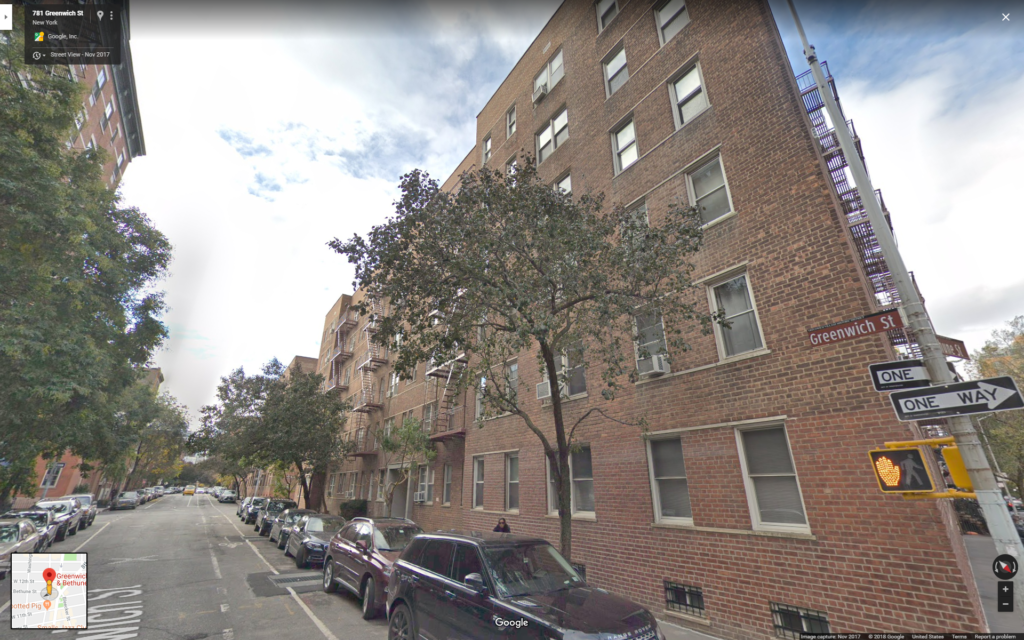Nile Rodgers: Musical Innovator, Child of the Village
The award-winning guitarist, composer, and producer Nile Rodgers was born on September 19, 1952. Rodgers co-founded the influential disco group Chic; produced music for artists as diverse as David Bowie, Sister Sledge, Daft Punk, Madonna, Diana Ross, and Disclosure; and played a pivotal role in the flowering and success of rap and hip hop.

Less well known about the musical innovator, however, is that he was raised in the heady ferment of bohemian Greenwich Village in the 1950s and 60s, where he was first exposed to many of the cultural and artistic influences which shaped his unique musical style.
Nile Gregory Rodgers Jr.’s musical influence over the last five decades cannot be understated. Chic had a string of Top 40 singles and albums in the late 1970s, including the disco classics “Le Freak,” “Good Times,” “Everybody Dance,” and “I Want Your Love.” But perhaps more importantly the band and particularly his “chucking” guitar style influenced dance and popular music for decades to follow, far outliving the disco era. Rodgers also co-wrote and produced the music for Sister Sledge’s album We Are Family, including the anthemic title track and the singles “He’s the Greatest Dancer” and “Lost in Music,” as well as Diana Ross’ “Upside Down” and “I’m Coming Out,” all considered classics of the era.

From there, Rodgers went on to almost single-handedly transform popular music in the coming decades. He produced David Bowie’s best-selling album Let’s Dance in 1983, helping to write the chart-topping title track. In 1984, he produced Madonna’s monster break-out album Like A Virgin, and produced hit records for ’80s staples like Duran Duran, INXS, and the B-52s. In later years, he would help produce records for Avicii, Pharell Williams, Sam Smith, Lady Gaga, and Christina Aguilera, among many others.
While Rodgers’ classic catalog remains popular among music fans, many of his compositions had second or third lives, some even more influential than their first. In 1979, the Sugarhill Gang used the bassline and strings from Chic’s “Good Times” on their breakthrough record “Rapper’s Delight,” the first Top 40 rap record and the first rap song most people ever heard (read more about that here). In 1997, the Notorious B.I.G. sampled Rodgers’ and writing partner Bernard Edwards’ “I’m Coming Out,” performed by Diana Ross, on his single “Mo’ Money, Mo’ Problems.” Propelled by those classic hooks, the song went on to become one of the most popular hip-hop singles of all time.

These are some pretty noteworthy achievements for a kid raised by (as he called them) junkies in Greenwich Village and Alphabet City. According to Rodgers’ autobiography Le Freak: An Upside Down Story of Family, Disco, and Destiny, he and his very bohemian parents, an African-American woman named Beverly who gave birth to him when she was 13, and his Jewish beatnik stepfather Bobby, moved into the then-newly-built 780 Greenwich Street (at the southwest corner of Bethune Street) in 1959, and remained there during many of his formative years. There he met Thelonious Monk and a lot of heroin addicts, as well as a parade of other unusual (though perhaps not for Greenwich Village of the time) characters.
He describes how the neighborhood then smelled of the “sewage-perfumed brine of the Hudson River that used to fill those cobblestoned streets.” Of his neighbors he said:
Many people in the building often smelled of linseed oil and turpentine; the girls wore their hair up in buns and walked with their toes turned out, radiating grace even when they were dumping the garbage. You could look into the windows of your neighbors and see and hear composers writing show and jazz tunes at their pianos, like something out of Hitchcock’s Rear Window.
His physical surroundings were equally striking:
From the south corner of our block looking right was the Bell Telephone Laboratory (now Westbeth), with an elevated railroad track that ran right through the middle of the building … back then, to my eyes, it was a world within a world, complete with a private transportation system. Standing in the lobby of my building and looking across narrow, Victorian-sized Greenwich Street, I’d see slaughtered livestock being moved onto loading docks, the meat swinging from large hooks.

Rodgers also vividly describes his experiences going to school at the “local public school in Alphabet City” (one of many places to which his family moved, including Chinatown, the Lower East Side, and the Bronx), as well as some less seemly experiences connected to the Women’s House of Detention on Greenwich Avenue and Christopher Street, and the notoriously seedy Greenwich Hotel on Bleecker Street between Thompson and Sullivan Streets (now the Atrium Apartments). He also offers some interesting insights into the racial politics of his downtown environs at the time, where “mixing,” such as between Rodger’s mother and stepfather, was much more common than virtually anywhere else, but it would be far from true to say that race did not matter.
Rodgers’ influential blending of musical genres and styles lives on today; his recollections show how some of that heady mix was forged in the very bohemian melting pot of Greenwich Village and downtown Manhattan of 60 years ago.

Great article another insight into the rich history of the area.